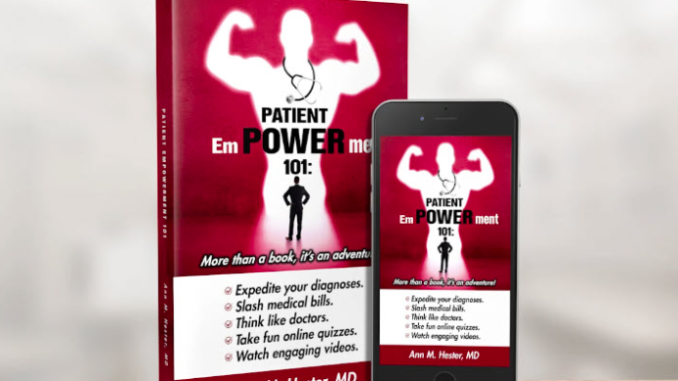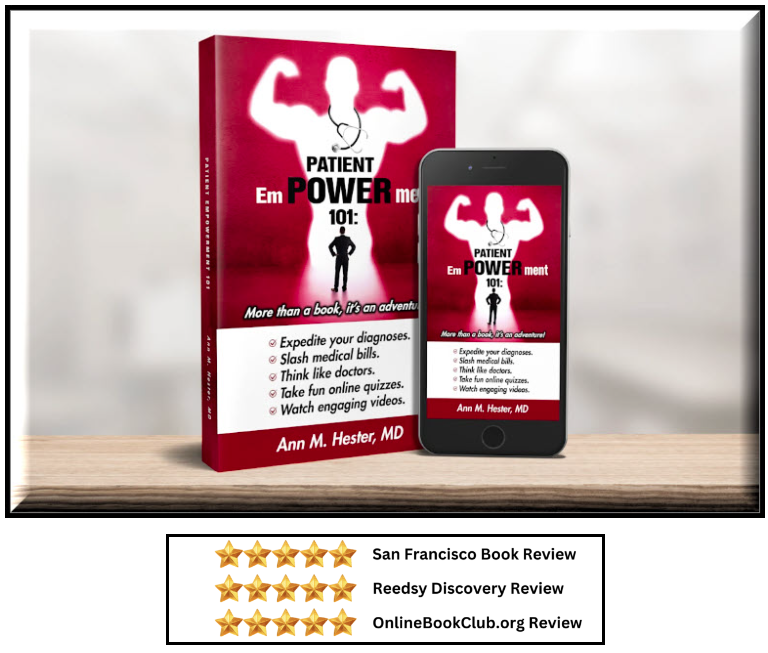
BY Ann Maria Hester, M.D.
Prepare in Advance: The Consumer’s Guide to Effective Doctor Visits
America’s healthcare crisis has been a long-standing concern, and the loss of job-provided healthcare has left millions without access to basic medical care. To make matters worse, by 2034, the country could face a significant shortage of physicians, potentially exceeding 180,000 doctors. This shortage seriously threatens the quality and accessibility of healthcare for everyone. The uncertainty of tomorrow’s healthcare landscape will send shivers down our spines. But, instead of dwelling on the negatives, let’s explore how individuals can take control of their healthcare journey and improve their health outcomes.
Empowering Patients: The Importance of Effective Communication
Effective communication between patients and their physicians is among the most critical aspects of ensuring better healthcare outcomes. Often, patients find themselves struggling to convey their health issues clearly, leading to potential misdiagnoses, unnecessary tests, and delayed treatments. To address this challenge, we must recognize that most individuals lack the medical training their doctors possess, making it essential to learn how to communicate more efficiently with healthcare providers.
The Power of Preparation
Imagine entering your doctor’s office well-prepared, with vital information about your symptoms, medical history, and concerns. This level of preparation can significantly impact your healthcare experience and outcome. Taking a few minutes to gather essential details before your appointment can make a world of difference.
Eight Vital Terms
As we navigate the complexities of the healthcare system, it’s crucial to be proactive in managing our health. One of the most essential aspects of optimizing doctor visits is preparation. By considering our symptoms and concerns in advance, we can provide our physicians with the correct information to expedite the diagnostic process and ensure better health outcomes. To expedite your healthcare and ensure your doctor has the necessary information to diagnose your condition accurately, focus on these eight elements:
- Context: Setting the Stage for Diagnosis
When experiencing a new symptom, please take note of the context in which it occurs. Recall what you were doing when the problem first surfaced. For example, if you feel lower back pain after moving heavy furniture, inform your doctor of this context. This valuable information can help your physician focus on the most likely causes, such as muscle strain, rather than unnecessary tests for more serious conditions like cancer.
- Character: Describing the Sensation
Paint a clear picture of the symptom’s character. Does it feel like a burning sensation or throbbing pain? Descriptions like these can steer your doctor toward a more accurate diagnosis. For instance, a burning sensation in the chest may lead them to consider heartburn rather than heart disease, potentially saving time and resources.
- Location: Pinpointing the Problem
Being exact about the location of your discomfort is crucial. If you’re experiencing abdominal pain, stating the specific area, such as the upper right abdomen just below your ribs, can significantly narrow potential diagnoses. This precision lets your doctor focus on the relevant organs or systems, avoiding unnecessary tests and speeding up the diagnostic process.
- Severity: Gauging the Impact
Assess the severity of your symptoms on a scale of 1 to 10. This simple measure helps your doctor understand the extent of the issue and its potential urgency. Accurate severity information can help prioritize your care appropriately.
- Duration: Tracking Progression
Knowing how long you’ve endured the problem is vital. Keep track of when you first noticed the symptom to provide an accurate timeline to your doctor. This information can offer valuable insights into the condition’s progression and aid in making the right decisions for your care.
- Timing: Noting Recurrence Patterns
Differentiate between the duration of the symptom and how often it occurs. Keep track of how long each episode lasts, as well as the frequency of recurrence. This information can help your doctor distinguish between intermittent and chronic issues, aiding in accurate diagnosis.
- Associated Signs and Symptoms: Identifying Patterns
Pay attention to any other symptoms that accompany the primary problem. Noting these associated signs, such as nausea and vomiting with abdominal pain, gives your doctor a broader perspective and can reveal patterns leading to faster and more accurate diagnoses.
- Modifying Factors: Identifying Triggers
Understand what worsens or improves your symptoms. Recognizing the factors that impact your condition can assist your doctor in tailoring treatment plans effectively. For instance, sharing that a headache dissipates in a dark room but worsens when using a computer can be pivotal information for your doctor.
Preparing for Follow-Up Visits:
For follow-up visits regarding chronic conditions, come equipped with pertinent information. If you have high blood pressure, bring in a log of home blood pressure readings taken at different times of the day. Similarly, if you have diabetes, your blood sugar log will be valuable to your doctor.
Being Prepared: What to Bring to Your Appointment
Apart from preparing the essential details about your health, it’s important to gather specific items to make your doctor’s visit more productive:
- Insurance card: Ensure you have your current insurance information readily available.
- Medications/Medication list: List all your current medicines, including dosages and frequencies.
- List of questions: Prioritize your concerns so the most critical ones are addressed during your visit.
- Pertinent outside documents: Bring any relevant medical records or test results from other healthcare providers.
- Personal health records: If it’s your first visit, having a summary of your medical history can be extremely helpful.
Tailoring Your Approach
Different doctors have varying styles of conducting appointments. Some may prefer you to explain your symptoms first, while others might take the lead and ask targeted questions. Regardless of their style, the key is to be prepared and proactively share the essential elements discussed earlier. This will free up more time during the visit, potentially addressing other health concerns and leading to a more efficient diagnostic process.
The Cost of Poor Communication
Understanding your symptoms and relaying them effectively can significantly impact your healthcare costs. By providing clear and concise information, you can help your doctor reach an accurate diagnosis faster, reducing the need for extensive questioning, examinations, and unnecessary tests.
Conclusion: Building Your Health Toolbox
The future of healthcare in America remains uncertain, but it’s crucial not to let fear paralyze us. We can better navigate the challenges by taking charge of our healthcare journeys and equipping ourselves with practical communication tools. As we prepare for potential physician shortages and an evolving healthcare landscape, let us remember our power as patients to influence our health outcomes positively. Building our health toolbox today is an investment in our future well-being. So, let’s be proactive, engaged, and informed, and together, we can create a healthier tomorrow.
About
Ann Maria Hester, M.D. is a board-certified internist with 30 years of clinical experience caring for patients in multiple settings. She was struck by the tremendous amount of unnecessary pain and suffering, which motivated her to start writing patient empowerment literature while still in medical school. She authored numerous online health information articles. Subsequently, she wrote a book called Your Family Medical Record: An Interactive Guide to Getting the Best Care in 2000. In 2022 she published Patient Empowerment 101: More than a book, it’s an adventure! This book has a sister website where readers can go to download fillable medical forms and watch empowering videos. Dr. Hester is a former syndicated columnist and Dr. Hester’s work can be found on KevinMD as well. Most recently, she launched a one-of-a-kind on-demand health and wellness course website, Patient World (https://www. patientworld.net) where people around the world can enroll to take fun and interactive courses taught by doctors, authors, and others with a health background.
Social Media
Resource Links
https://www.patientworld.net (on-demand health and wellness course platform)
https://www.patientworld.net/healthhacks (Quick health hacks newsletter sign up)
https://www.patientempowerment101.com (book website)
https://www.amazon.com/Patient-Empowerment-101-More-adventure/dp/B0BMXQTZJB (Amazon page to purchase book)








